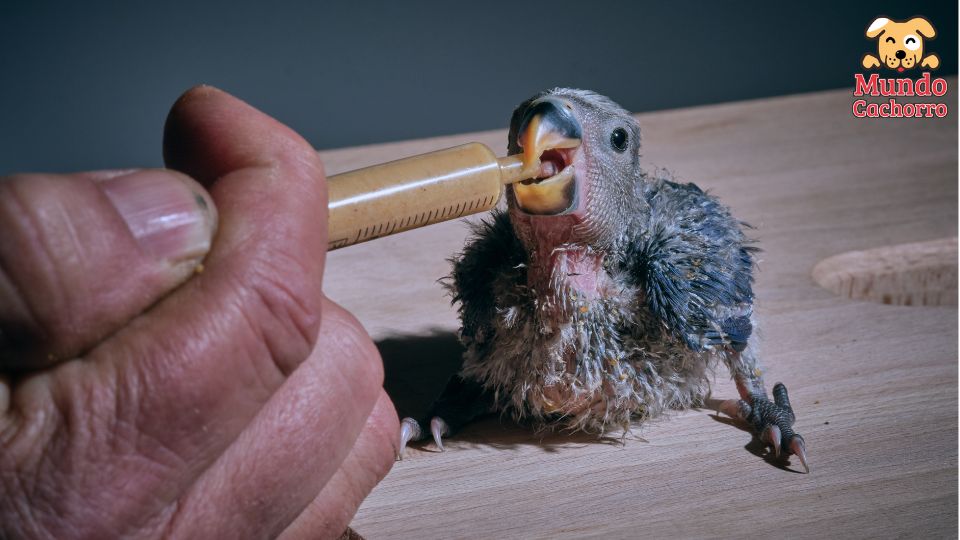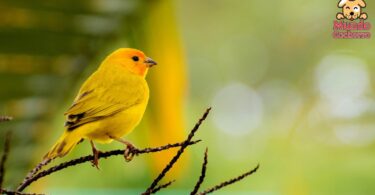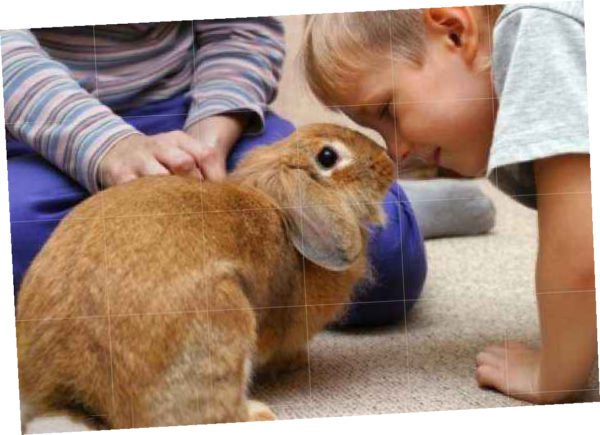Caring for an inseparable bird requires dedication and knowledge, especially when it comes to feeding. Lovebirds, also known as lovebirds, are small, colorful birds that, when raised from chicks, need special attention to ensure their growth and well-being. Feeding a lovebird correctly is crucial for its development, and in this article we offer you a practical guide on how to do it, from the choice of food to the proper feeding techniques.
Indice
What is an inseparable bird of prey?
Before we delve into feeding, it is important to understand what a papillary inseparable is. The term “papillero” refers to a chick that has been separated from its parents and hand-fed by a person. This is usually done to create a stronger bond between the bird and its owner, resulting in a more docile and sociable Lovebird.
Being fed by humans from an early age, the papillary lovebird is completely dependent on its caregiver for nutrition.
This implies a great responsibility, as improper feeding can lead to serious health problems.
The importance of good nutrition
The feeding of a young bird must be meticulous and adequate to its specific needs.
During the first few weeks of life, the chick relies exclusively on mash, a food formulated to provide all the essential nutrients it needs to grow strong and healthy.
It is crucial to choose a high quality food, designed specifically for psittacine birds, containing a balanced mix of proteins, fats, carbohydrates, vitamins and minerals. Poor nutrition at this stage can lead to developmental problems, weakness and disease. Therefore, it is essential to make sure that the inseparable is receiving everything it needs to grow properly.
Preparation of the slurry
Correct preparation of the food is essential to ensure that your pet gets the nutrients it needs. Here are some key steps to properly prepare and administer baby food:
- Choose a quality food: Opt for a food specifically formulated for psittacine chicks, available in specialized poultry stores. Avoid using homemade or non-specific feeds, as they may not provide the necessary nutrients.
- Mix the porridge with warm water: Follow the manufacturer’s instructions for mixing the slurry with water. The water temperature should be between 37 and 40 degrees Celsius, as too cold or too hot a slurry can cause digestive problems or burns in the chick.
- Make sure the mixture is homogeneous: Stir the mixture well so that there are no lumps. A well-mixed slurry ensures that the chick can digest it without problems.
- Use clean utensils: It is essential to use clean syringes or spoons to feed the inseparable. Hygiene is key to avoid infections, especially in such young and vulnerable birds.
Frequency and quantity of feedings
The frequency and amount of food you give to your inseparable papillero will depend on its age. The following is a general guide:
- From 1 to 2 weeks of age: Chicks require feeding every 2-3 hours, even during the night. The amount of food should be sufficient to fill the crop, but without overfeeding the chick.
- From 2 to 3 weeks of age: The frequency of feedings can be reduced to every 3-4 hours, and it is possible to start spacing night feedings. The craw should be filled, but allowed to empty before the next feeding.
- From 3 to 4 weeks of age: You can reduce feeding to every 4-5 hours. At this stage, the chick will begin to show interest in pecking at solid foods. It is important to slowly introduce small amounts of fruits, vegetables and seeds.
- From 4 weeks of age onwards: The little bird will begin to reduce its dependence on food. You can offer it 3 times a day as you introduce more solid foods. As the chick grows, reduce the amount of food until it is completely weaned.
It is crucial to observe the chick’s behavior and adjust the frequency and amount of feeding according to its specific needs.
Each hatchling is unique, and some may need more time to adjust to the introduction of solid food.
Technique for feeding a lovebird
The technique you use to feed your pet is also important for its well-being. The most common way to feed a baby bird is to use a syringe, which allows you to better control the amount of food the chick receives.
Here we explain how to do it:
- Load the syringe with the prepared porridge: Make sure there are no air bubbles in the syringe, as these can cause digestive problems.
- Hold the chick in a suitable position: Place the chick in your hand so that its head is slightly elevated. This facilitates swallowing and reduces the risk of the slurry entering the airway.
- Insert the syringe into the left side of the beak: The syringe should point towards the right side of the chick’s crop. Administer the feed slowly, allowing the chick to swallow at its own pace. Avoid squeezing too fast so as not to force the food.
- Observe the chick’s crop: Once the crop is full, stop feeding. The crop should feel full but not strained. If it is too full, wait for it to empty before feeding more food.
Transition to solid foods
As the Lovebird grows, it is important to begin the transition to solid foods gradually. Introduce small amounts of fruits, fresh vegetables and seeds into his daily diet.
You can place these foods in the chick’s feeder so it can begin to explore them on its own. It is normal that at the beginning, the pet will only play with solid foods without consuming them. However, over time, he will learn to eat them and you can gradually reduce the amount of food you give him.
This transition must be done with patience, always making sure that the chick maintains its weight and health.
A responsibility that requires attention and care
Feeding a poultry is a responsibility that requires attention and care, but the effort is well worth it as it grows and develops healthy and strong.
By following the proper steps in the preparation of the food, frequency of feedings and feeding technique, you will ensure that your pet will receive the best nutrition possible. The transition to solid foods is a natural step in your pet’s development, and with patience, he will soon be fully weaned, ready to enjoy a varied and balanced diet.
Remember that every lovebird is unique, and paying attention to its specific needs will allow you to raise a happy, healthy bird.








